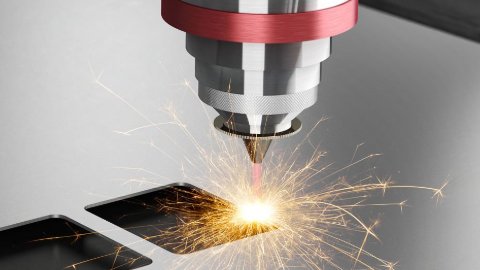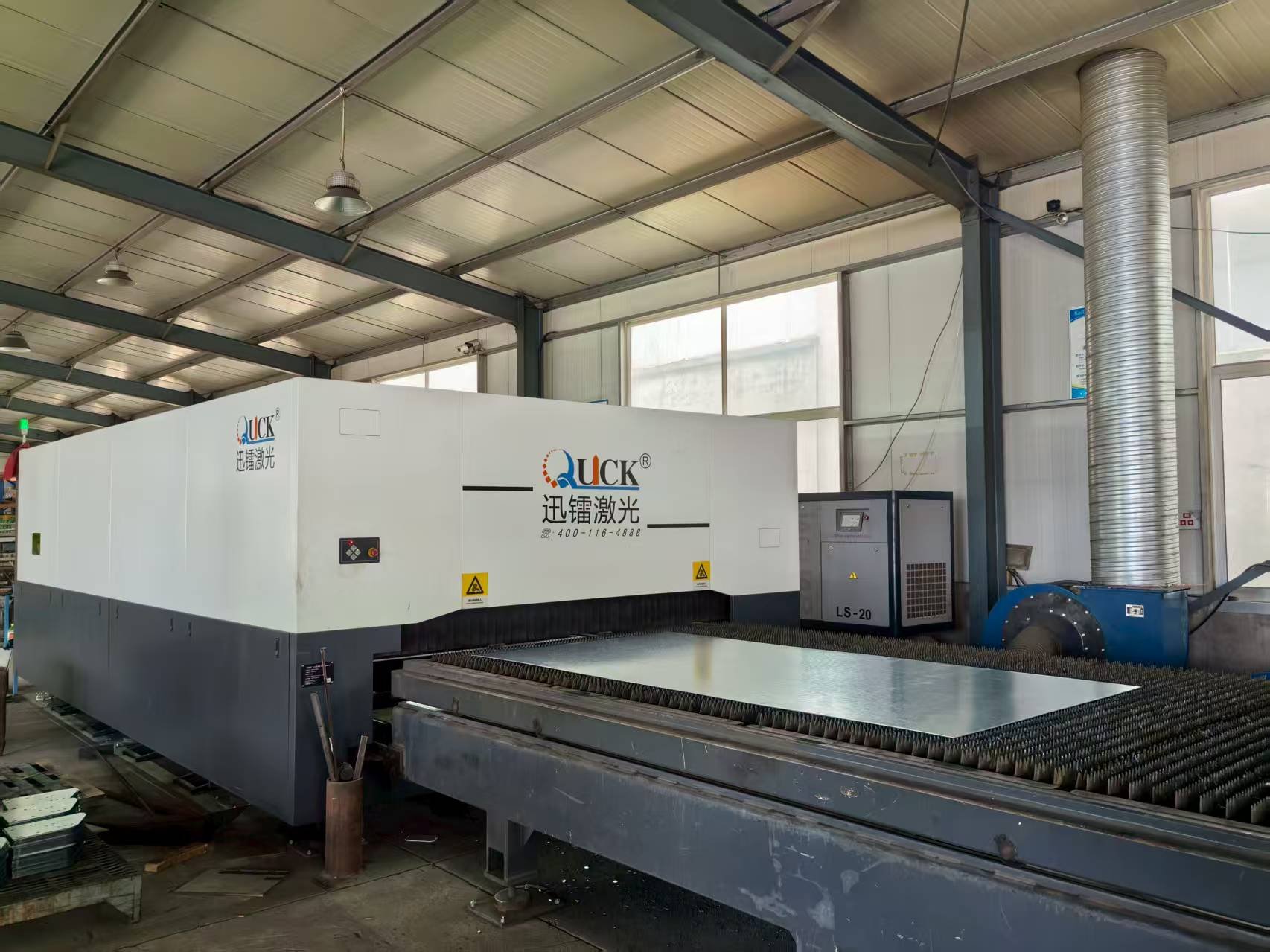
The Positive and Negative Impacts of Aluminum's Melting Point on Laser Cutting and Countermeasures
Amidst the current booming industry, the application of laser-cut aluminum products is becoming increasingly widespread. From aluminum alloy components for aerospace applications to aluminum panels for architectural decoration and aluminum housings for electronic devices, laser cutting, with its advantages of high precision, high efficiency, and excellent cut quality, meets complex design requirements, helping aluminum products flourish in a wide range of fields and naturally increasing in number. However, aluminum's melting point is unique compared to other common metals. This article, based on practical processing scenarios, will detail the positive impacts and negative challenges of aluminum's melting point on laser cutting, as well as targeted process countermeasures, providing a reference for companies to optimize their laser cutting processes for aluminum products.

Aluminum's Melting Point Lowers the Barrier to Laser Cutting: Two Significant Positive Impacts
Aluminum's melting point (approximately 660°C for pure aluminum and 580-660°C for aluminum alloys) is much lower than that of metals like steel and titanium. This characteristic provides direct efficiency advantages for laser cutting and is a key factor in promoting the mass production of aluminum products.
1. Aluminum's low melting point reduces laser cutting energy consumption
The core of laser cutting is to melt or vaporize the material using a high-energy-density laser. Aluminum's low melting point means less laser energy is required to achieve this state. Compared to cutting steel of the same thickness (melting point approximately 1538°C), laser cutting aluminum can reduce laser power by 10%-20%. For example, to cut 6mm of pure aluminum, a 3000-4000W laser is sufficient, while cutting the same thickness of steel requires 4000-6000W. This feature not only reduces the energy consumption of laser cutting equipment but also extends the life of the laser generator.
2. Optimizing aluminum's melting point improves laser cutting efficiency for thin materials
For thin aluminum sheets ≤3mm thick, aluminum's low melting point offers a more pronounced advantage—the laser can penetrate the material quickly, significantly increasing laser cutting speed. Data shows that the laser cutting speed for 1mm pure aluminum can reach 10-15m/min, while the laser cutting speed for mild steel of the same thickness is only 8-12m/min. In mass processing of thin materials such as electronic component housings and aluminum heat sinks, the increased efficiency brought by aluminum's melting point can help companies shorten production cycles and improve order response times.
Aluminum's Melting Point Causes Laser Cutting Challenges: Four Negative Impacts to Be Aware of
Although aluminum's melting point provides the basis for laser cutting efficiency, its low melting point also makes it more sensitive to heat input, directly leading to problems such as slag sticking and thermal deformation during laser cutting, affecting processing quality and product performance.
1. Aluminum's Low Melting Point Can Easily Lead to Slag Sticking on Laser Cutting Incisions

Due to its low melting point, aluminum quickly melts into a liquid state during laser cutting. Aluminum's extremely high thermal conductivity (approximately three times that of steel) makes it easy for molten aluminum to spread around the incision. If the assist gas pressure is insufficient or the nozzle angle is incorrect, any liquid aluminum that isn't removed promptly will rapidly cool and solidify, forming "dross" on the edge of the cut. This dross not only requires subsequent polishing, increasing process costs, but can also cause deviations in the laser cut cut dimensions. For example, a cut originally designed for 10mm may actually increase to 10.2mm due to dross, affecting part assembly accuracy.
2. Aluminum's melting point increases the heat-affected zone (HAZ) during laser cutting.
Aluminum's low melting point means it's more sensitive to laser energy. During laser cutting, localized heat transfers easily to the surrounding area, expanding the heat-affected zone (HAZ). Typically, the HAZ for pure aluminum laser cutting is 0.1-0.3mm, while for steel, it's only 0.05-0.15mm. Aluminum grains in the heat-affected zone (HAZ) coarsen due to high temperatures, leading to a decrease in the material's mechanical properties. For example, in 6061 aluminum alloy, the hardness of the HAZ can drop from 100 HV to 80 HV after laser cutting, significantly detrimental to high-strength products such as aerospace structural parts and automotive load-bearing components.
3. Aluminum's low melting point can easily cause laser cutting kerf burn and deformation.
If the laser cutting power is too high or the cutting speed is too slow, aluminum's low melting point can cause overheating, resulting in kerf burn (such as blackening of the edges and thickening of the oxide layer). For thin aluminum sheets (1mm thick or less), the concentrated heat input can also cause thermal deformation. Originally flat aluminum sheets may warp after laser cutting, failing to meet the precision requirements for subsequent welding and assembly. In the processing of pure aluminum thin sheets, if laser cutting parameters are not properly controlled, the kerf burn rate can reach over 30%, seriously affecting the product's appearance and performance.
4. The difference between the melting point of aluminum and its oxide layer hinders laser cutting.
The naturally occurring oxide layer (Al₂O₃) on aluminum has a melting point of 2050°C, significantly different from aluminum's melting point of 660°C, further complicating laser cutting. Firstly, the high-melting-point oxide layer reflects approximately 80% of the laser light (higher than steel's 50% reflectivity), reducing the energy actually reaching the aluminum substrate and requiring higher laser cutting power to penetrate. Secondly, during laser cutting, the aluminum substrate melts, but the oxide layer remains. This layer easily mixes with the liquid aluminum and forms "hard slag," which adheres to the cut edge and is difficult to clean, significantly reducing the smoothness and quality of the laser cut.
Targeted Countermeasures: Balancing Aluminum's Melting Point with Laser Cutting Quality
To address the negative impact of aluminum's melting point on laser cutting, precise control is required, including parameter adjustment, auxiliary methods, and pretreatment, to achieve high-quality laser cutting.
1. Optimize laser cutting parameters to suit aluminum's melting point
Due to aluminum's low melting point, a combination of high power and high cutting speed is essential. For example, when laser cutting 3mm thick aluminum, set the laser power to 3000W and control the cutting speed to 3-5m/min to reduce heat input per unit area and avoid excessive melting. For thin aluminum (1mm thick or less), pulsed lasers (pulse frequency 500-1000Hz) are recommended. This intermittent heat input reduces the risk of burns and deformation at the cut. Practice has shown that by properly adjusting parameters, the slag sticking rate in laser cutting aluminum can be reduced from 25% to below 5%.
2. Enhance the assist gas effect to combat slag caused by aluminum's melting point
Due to aluminum's low melting point, liquid aluminum easily accumulates. Therefore, laser cutting requires enhanced assist gas removal. High-pressure nitrogen (0.8-1.2 MPa, higher than the 0.5-0.8 MPa used for cutting steel) should be used, along with a "double-layer nozzle" or "angled nozzle" to optimize the airflow direction and ensure timely removal of the liquid aluminum. For thick aluminum sheets (≥8 mm), the distance between the nozzle and the material can be increased to enhance gas penetration and reduce slag buildup at the bottom of the cut.
3. Pre-treat the oxide layer to eliminate the effect of the difference between the melting point of aluminum and the oxide layer.
Before laser cutting, the high-melting-point oxide layer on the aluminum surface must be removed. This can be done by sanding or chemically pickling (e.g., soaking in dilute hydrochloric acid). For products less sensitive to oxidation (e.g., decorative aluminum parts), oxygen-assisted laser cutting can be used. The heat released by the reaction of oxygen and aluminum helps break down the oxide layer while increasing cutting speed. After pretreatment, laser cutting energy efficiency can be increased by 15%-20%, and slag generation can be reduced by 40%.
4. Fixing and Path Optimization to Reduce Laser Cutting Deformation Caused by Aluminum's Melting Point
Due to the low melting point of aluminum, which can easily cause thermal deformation, laser cutting requires enhanced material fixation. A vacuum adsorption platform is used to secure thin aluminum sheets to prevent movement during processing. Furthermore, the cutting path is optimized, for example, by cutting from the inside out to the outside to reduce stress concentration at the edges. When cutting large aluminum parts, preheating (controlling the temperature between 100-150°C) can be used to balance the temperature difference between the inside and outside of the material, further reducing the possibility of deformation.

Laser cutting and aluminum metal are widely used in the industrial field. Understanding the characteristics of aluminum and laser cutting can greatly benefit rapid, high-quality production. Kailai Machinery has its own laser cutting equipment and extensive experience in the industry. If you have any related needs, please contact us.

